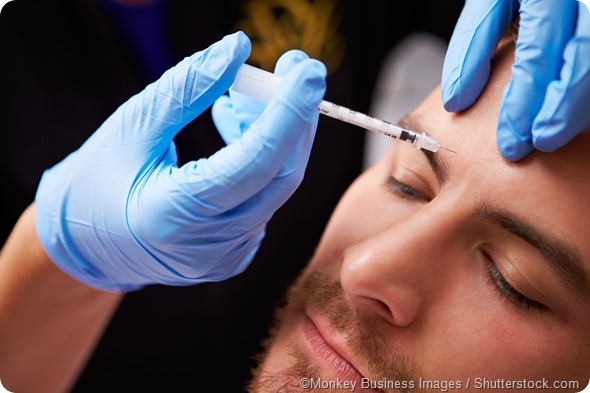Injectable cosmetic treatments are chosen by many individuals as a solution for reducing facial wrinkles and achieving smoother looking skin.
Over time, all skin areas of the body age, with the damage mainly being caused by excessive sun exposure. This exposure to sunlight can result in facial wrinkles, sagging, dryness, liver spots and growths. Cigarette smoking and inherited factors may also contribute.
Increasingly, people are turning to cosmetic and/or medical treatments to combat these features of aging. The treatments available range from surgical procedures to rejuvenation techniques such as chemical peels, dermabrasion, and laser resurfacing. Other popular options include the use of Botox injections and injectable dermal fillers.
Botox injections
Botulinum Toxin Type A is a neurotoxin produced by a bacteria called Clostridium botulinum. Small injected doses of the toxin paralyses and relaxes muscles in the face, which eventually makes wrinkles and frown lines less obvious.
Local anesthesia is not usually required. The skin is cleaned and the treatment is injected into areas of the face where it is needed. Each area usually requires several injections and the process takes around ten minutes.
The effects are not immediately obvious. The treatment takes a few days to have an impact and full effects are achieved after about two weeks. These effects usually last for four to six months, after which further injections are required to maintain them.

Dermal fillers
There are four main types of injectable dermal fillers, which include fat, collagen, hyaluronic acid, and microsphere containing carriers of another material such as polymethyl methacrylate (PMMA). These are described in more detail below.
Here, fat is taken from a part of the patient’s body such as the buttocks or abdomen and re-injected into parts of the face that have started to lose fat. This can smooth out wrinkles, enhance facial fullness and build up hollow areas. The grafted fat needs to develop its own blood supply in order to “take,” in which case the graft “blossoms” and becomes a permanent part of the facial tissue. This is much more effective than the use of synthetic fillers, which often require top-up maintenance treatments at least once a year.
The second skin layer that lies underneath the outer layer (epidermis) is called the dermis. The dermis is mostly made up of a protein called collagen, a network of fibers that provides support for cell and blood vessel growth. Collagen can be injected into the face to reduce the signs of aging, to give the face more volume and to fill in scars. Results may last for up to four months.
HA is a naturally occurring substance in the human body that serves as a network for the transfer of nutrients from the blood to skin cells. Once injected into the skin, HA behaves like an inflated cushion, supporting tissues and structures in the face that may have become less elastic or lost volume. The effects last between six and nine months, after which they can be maintained with top-up treatments. These are usually given about twice a year.
This filler is used to treat moderate-to-severe wrinkles. It is also used to make the cheeks look more full and to smooth other contours of the face. The filler is made up of tiny calcium particles suspended in a smooth gel. This filler is reported to stimulate the natural production of collagen. Calcium hydroxylapatite is thicker than HA filler and results can last for up to 12 months.
- Poly-L-lactic Acid (PLLA)
PLLA is a biodegradable, synthetic material that is gradually absorbed by the body. It is one of the thicker fillers and is used to treat deep lines that develop as a result of collagen loss. As PLLA microparticles are absorbed, they stimulate collagen production, which rebuilds collagen strands and restores the structure and volume of the facial skin. On average, patients attend three sessions over the course of a few months and the effects usually last for around two years.
- Polymethyl methacrylate (PMMA)
PMMA is a synthetic, biocompatible substance that, after injection, settles beneath the skin where it provides support. The fillers also contain collagen, offering the skin further support. PMMA fillers are made up of around 20% PMMA microspheres suspended in about 80% of purified collagen gel.
A few months after a person is injected with these fillers, the collagen breaks down. This stimulates the body to produce its own new collagen as a replacement. PMMA fillers are generally used to treat medium to deep wrinkles and folds.
Dermal Filler Types - Aurora Skin Clinics
Further Reading
Last Updated: Jan 19, 2023